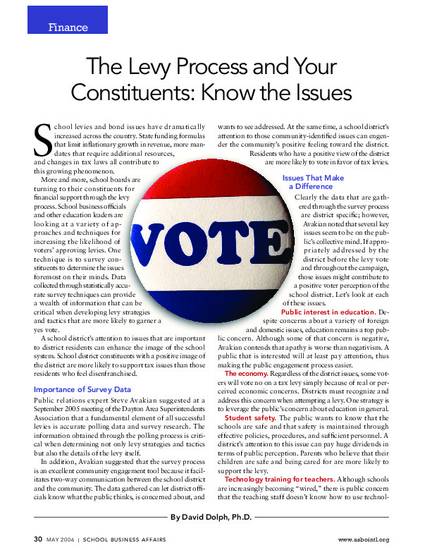
School levies and bond issues have dramatically increased across the country. State funding formulas that limit inflationary growth in revenue, more man- dates that require additional resources, and changes in tax laws all contribute to this growing phenomenon.
More and more, school boards are turning to their constituents for financial support through the levy process. School business officials and other education leaders are looking at a variety of approaches and techniques for increasing the likelihood of voters’ approving levies. One technique is to survey constituents to determine the issues foremost on their minds. Data collected through statistically accurate survey techniques can provide a wealth of information that can be critical when developing levy strategies and tactics that are more likely to garner a yes vote.
A school district’s attention to issues that are important to district residents can enhance the image of the school system. School district constituents with a positive image of the district are more likely to support tax issues than those residents who feel disenfranchised.
- Educational Administration and Supervision,
- Educational Assessment, Evaluation, and Research,
- Educational Leadership,
- Education Economics,
- Elementary and Middle and Secondary Education Administration,
- Higher Education Administration,
- Other Educational Administration and Supervision,
- Special Education Administration and
- Urban Education
Available at: http://works.bepress.com/david_dolph/22/

This article originally appeared in the May 2006 School Business Affairs magazine and is reprinted with permission of the Association of School Business Officials International (ASBO). The text herein does not necessarily represent the views or policies of ASBO International, and use of this imprint does not imply any endorsement or recognition by ASBO International and its officers or affiliates.
Permission documentation on file.